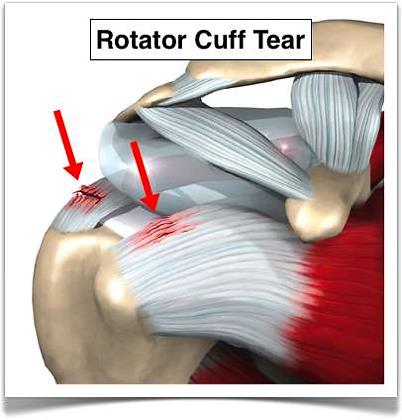 Surgical approach: The rotator cuff naturally has low blood supply. The hope is that if the surgeon sews the torn segment back together, it will heal.
Surgical approach: The rotator cuff naturally has low blood supply. The hope is that if the surgeon sews the torn segment back together, it will heal.
The challenge: Too often, the rotator cuff does not heal due to the poor blood supply and the lack of stem cells for repair. A 57% rotator cuff repair failure rate was reported by the American Academy of Orthopaedic Surgeons (AAOS) in 2012. Many rotator cuff muscles and tendons tear because they have poor blood supply and fewer stem cells, leading to weak tissue. A sling is often worn by the patient for up to six weeks after surgery, further weakening the tendons and muscles. Similar to other orthopedic surgery, rotator cuff repair involves risk of infection, tissue failure, and cardiovascular events.
The RIT approach: Utilizing ultrasound guidance, the physician injects platelets or stem cells into the affected tissue to jumpstart the healing process. Most often, no brace will be needed during recovery, so atrophy of the muscles is less likely. RIT promises no surgical risk, no slings or braces, and participation in a physical therapy program that is often significantly less painful and more functional overall for the patient. Hyperbaric oxygen therapy accelerates the total healing process by feeding the newly implanted cells and by helping repair and strengthen the torn tendon.
